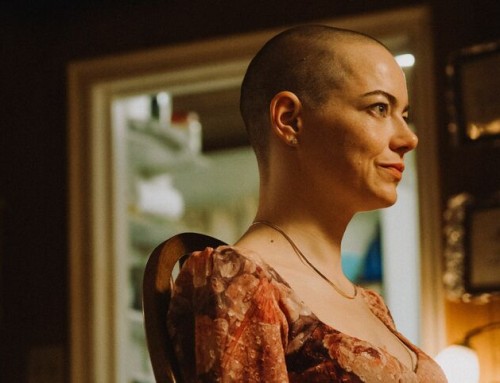![]()
Trash cinema is a term not lightly used by this reviewer. First, how does one define or intend the use of that term? John Waters and Andy Warhol both made “trash” yet their films have-mostly-stood the test of time and become appreciated for what they are, transgressive works of art that will not work for most audiences. There is trash, like the The Sinful Dwarf, a film so horribly executed and without deeper purpose, that its very existence offends certain audiences. Into this debate now enters Radu Jude and his version of Dracula.

Courtesy 1-2 Special
Jude, the Romanian rebel of cinema, who has brought audiences such works as Bad Luck Banging or Loony Porn and Do Not Expect Too Much From The End of the World, is a difficult director to situate. There is a touch of Godard to him, in that his films are reflective and reflexive examinations of history, philosophy, politics, art, culture and cinema itself. He is an absolute iconoclast and this reviewer cannot think of many directors currently active who are as truly transgressive as Jude. His previous films all followed a similar ethos, yet none are the same.
Dracula, as such, is another fiercely singular work. This time, the premise is a Romanian director-a stand in for Jude himself-is given the opportunity to do a homegrown version of Dracula. He cannot decide on how he will make his film, and what the themes or basic premise will be. So, he consults an AI, which then spits out roughly a dozen different scenarios and hoped for inspirations. Why AI, though?

Courtesy 1-2 Special
Romania, as an eastern European country, has seen a lot of its iconography and culture appropriated or otherwise assumed elsewhere in the world. What does AI do, when it comes to being used for film? The argument, mainly, is that it is complicit in acts of vandalism and plagiarism. Why Dracula? Because, of course, “The Count” is a parasite, as well as a symbol of everything subsumed by world culture that is lost from its origin. Dracula also represents death and a lessening, due to loss of life and soul, which could be seen as analogous to what AI “art” churns out.
There are sequences here that have absolutely nothing, on the surface, to do with Dracula. Yet, thematically, using Dracula as a metaphor, each vignette showcases the ways in which what is essential might be cheapened. The film is shot in a minimalist and very absurd fashion. There is, at times, a touch of Brecht, in how the aesthetics work. Yet, for all its ambition, and some truly great moments, the film does not quite achieve full velocity.
One problem here is that the self indulgence, so abundant and charming in Jude’s other films, is not backed up as sublimely in this film as his others. Where in those, there is point/counterpoint, and each section fits together to argue or present a case that will convince or at least make you think, this one mostly sputters along, making you work twice as hard as you should, to piece together what it is all about. This is a rare instance where a longer film about great themes could have benefited from a significant portion being cut. Ultimately, the film outstays its welcome by belaboring its points.

Courtesy 1-2 Special
The film is, of course, uproariously funny and raunchy, with graphic sexual and violent content present in each section. There is a magical realism, as well, which almost works. Some of the arguments between the director and the AI about copyright and editorial control, are deviously clever. Yet, it is too uneven a work to be considered among the best of Jude’s career, though it is still worth seeing as a curiosity. By taking the trappings of “trash” in order to explore art vs commerce and who owns what, the film offers a fascinating “almost” that should not be missed by fans of such things. The rest of you will likely not have any patience for this one.
Radu Jude’s Dracula is now playing in select theaters.








I admire Jude so much, I am truly excited to see this, whether it fully works or not.